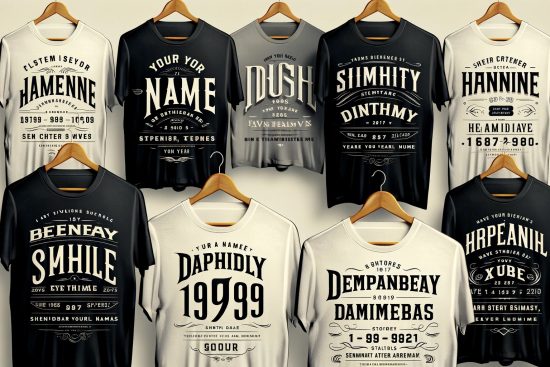
|
Getting your Trinity Audio player ready...
|
There is nothing better than personalising tote bags from the comfort of your own home! Custom design tote bags have always led the pack regarding economical, functional and trendy bags.
Learning how to screen print at home is a terrific way to expand your DIY fashion skills or add to your home craft alternatives as an Etsy seller or for your home business.
Whether you’re a home craft enthusiast who wants to learn how to DIY screen printing or a fashion business owner who wants to take control of printing production, understanding how to print is necessary.
If you don’t know where to begin, you’ve come to the correct place! This article will guide you in designing an awesome-looking tote bag.
Printing on a Tote-bag
First, you must finalise the pattern or picture you want to print on your tote bag. Here are some guidelines for doing it correctly:
Consider the scale of the image or pattern you’re creating. Since you will typically be enlarging a smaller image or pattern, the visual quality may suffer. Resize your image and run it via the online Photo Editor’s Image Upscale feature. This AI-powered feature will enhance your photo’s resolution, making it appear significantly better when printed.
The simplest method for printing a pattern on a tote bag involves inverting the picture and publishing it on transfer paper. Then, iron the tote bag’s fabric and place the printed image face down. Iron the pattern according to the transfer paper’s instructions. To achieve an excellent outcome, remove the paper layer, apply silicone or baking paper on top, and iron again. Once it has cooled, remove the paper.
Remember to wash your DIY tote back separately and in cold water to prevent colour bleeding and shrinking. Additionally, do not dry your tote bag in the dryer.
Heat Transfer
Heat transfer printing applies designs to tote bags using heat and pressure. For this procedure, adhesive-coated, heat-applied materials are used. The glue is triggered by applying heat with an iron. This causes the material to adhere to the canvas bag. There are two significant categories of heat transfer methods:
1. Digital Print Heat Transfer
When Is It Used?
Heat transfer printing is only applicable to materials that can withstand heat. The majority of tote bag fabrics are resistant to heat. Thus, heat transmission becomes a viable option. Heat transfer cannot be used on synthetic materials. However, this approach effectively transfers highly realistic photographic pictures to bags.
Pros
- Small quantities can be produced rapidly.
- Excellent for full-colour photographic prints.
- There are no restrictions on the use of colours.
- Excellent for both dark and light materials.
- Canvas, jute, and nonwoven fabric bags with attractive and colourful designs.
2. Sublimation
Like heat transfer printing, sublimation printing differs in a few ways. First, the process transfers sublimation paper-printed graphics. This process uses heat and pressure to transform solid ink into a gaseous state like heat transfer. When the ink has cooled, it reverts to a solid state and bonds to the fabric. This makes the pattern an integral part of the cloth without adding layers.
Screen Printing
Screen printing is a technique that includes pushing ink through a screen and stencil mesh to print a design onto blank tote bags, blank T-shirts, or even reusable bags.
You may use pre-made stencils and designs for a few easy designs, such as personalised shopping bags or canvas tote bags. Creating your frames and stencils is an excellent alternative if you want your products to have a unique appearance.
Homemade Screen Printing Techniques
Here are the materials you’ll need to begin home screen printing:
- A screen and frame can be obtained online or at a local art store.
- A robust light bulb (250 watts or more)
- A room with no windows, such as a huge closet or a bathroom.
- Photo emulsion and photosensitive agent
- Latex gloves for skin protection
- Tote bags
- Inks for silkscreened fabrics
- An inkjet printer and transparency paper (optional)
Here are the simple methods to let you personalise inexpensive tote bags, duffel bags, t-shirts, and a range of other things.
Make Your Design
Inspiration is an excellent place to start. You will need to develop something digitally using computer software with a simple, bold, and black design. Unless more complex processes are utilised, screen printing at home is typically limited to a single colour.
The image must be completely black because it will be used to build the screen we will employ. You can print the design on transparent paper or purchase a fine photocopy.
Coating the Display
Next, you will need to apply an emulsion to your screen. This entails combining a sensitizer with the emulsion to produce a liquid poured over the screen. Ensure that you have a layer underneath to protect your working surface. You can also use the squeegee to distribute the emulsion, but don’t forget to clean it if you plan to reuse it in the screen printing procedure. It may be necessary to repeat this process to achieve an even and thin layer throughout the entire screen.
Once the screen has been coated, it can dry in a fully dark room for two hours. Leave a layer beneath it if any of the emulsion leaks.
Illuminating the Image
Now, the image must be burned into the screen. In the dark room, place a black surface, such as a trash bag or fabric. Next, place the frame with the screen facing down on the black surface. Place the image’s transparency on the screen where the emulsion resides. Use tape to secure the openness or place a piece of clean glass over it. Now, position the lamp over the screen, switch it on, and leave it on for around 20 minutes.
After 30 minutes, switch off the light and carefully remove the transparent containing your image. You should now observe faint lines where the image has been burned into the display. You will need to wait a little longer if it does not appear correct.
Cleaning the Display
Use some water to wipe the display clean. Using a showerhead is an excellent method to accomplish this. Your image should now begin to flake off, showing your design without any photo emulsion. After the screen has cured, apply tape to cover exposed areas where no emulsion has been used. This will prevent ink from leaking through areas where printing is not desired.
Printing
It is now time to print. Tote bag should be laid out as flat as possible with a protective layer underneath. Use the cardboard or other insert and set it beneath the layer that will be printed on. For instance, if you are printing on a shirt, insert a piece of cardboard to prevent ink from leaking to the other side.
Once the object has been flattened, position the screen over the region and secure it. Place the ink at the top of the screen and horizontally distribute it. Use the squeegee to press the ink onto the screen and draw it toward you. This should transfer the ink from the transparent portion of the screen to your object. Repeat this process multiple times to get an even coat.
Final Touching
Once the printing is complete, wait a few seconds and then apply heat to solidify the ink. If you have a hairdryer, iron, or shirt press, you may use them.
Conclusion
Beautiful personalised tote bags are so fashionable and contemporary that you can never go wrong carrying them. Combine the appropriate hues with an excellent tote bag design of your creation.
We hope our straightforward guide to DIY screen printing at home was informative and aided you in understanding the process. The best outcomes are always achieved by beginning with a high-quality blank item; therefore, don’t hesitate to contact Garment printing if you need any custom-printed tote bags. We also offer huge discounts on bulk orders which would go easy on your pocket and satisfy your business or creative passion.
Suggested Reads:
- DIY T-Shirt Painting: Techniques and Tips for Beginners
- DIY T-Shirt Bra: Create a Comfortable and Unique Bra at Home
- How To Do DIY T shirt Printing




















